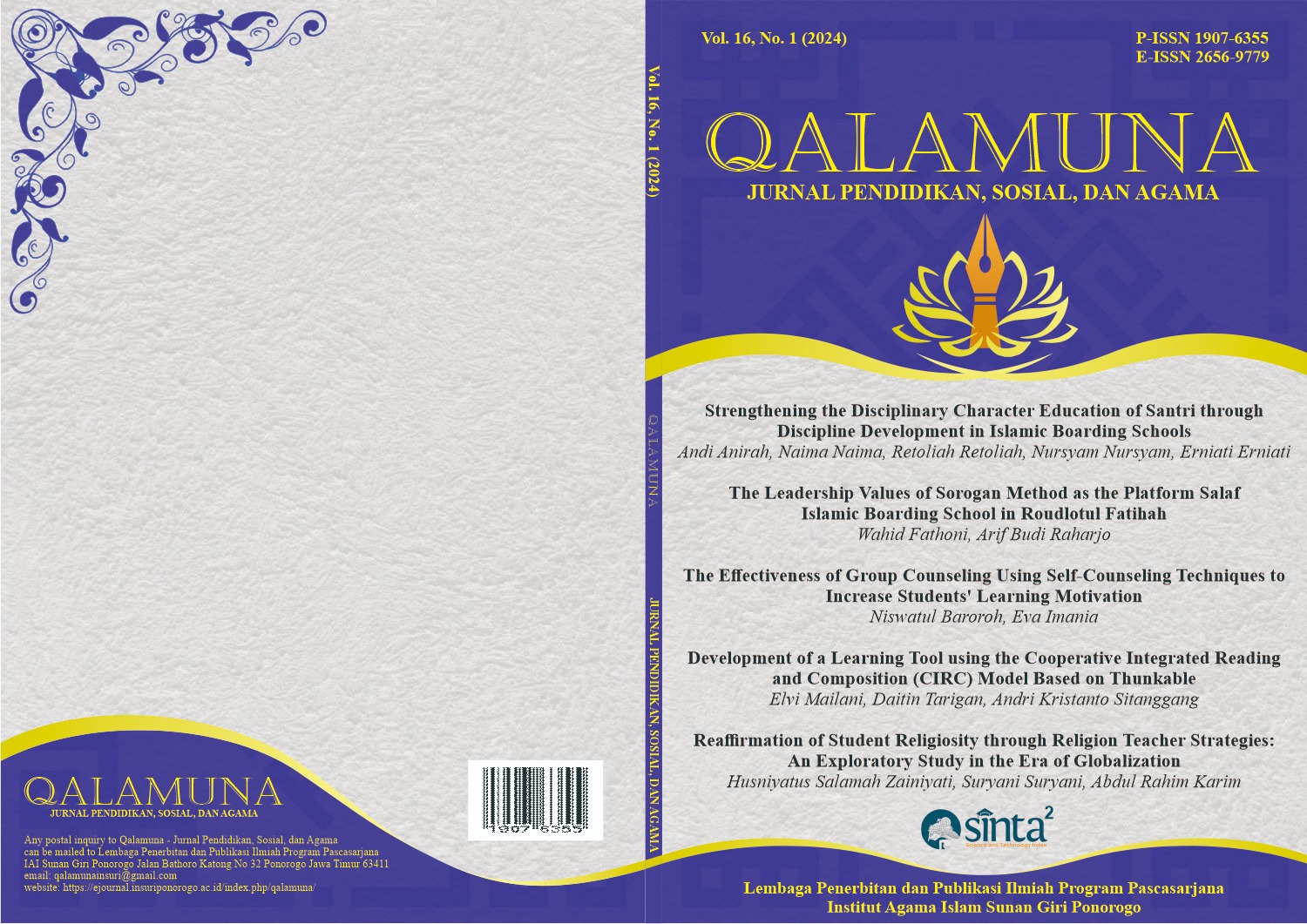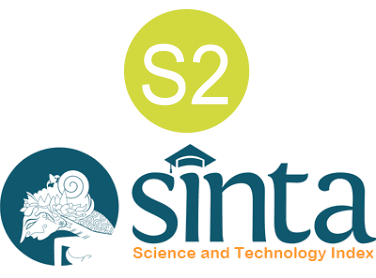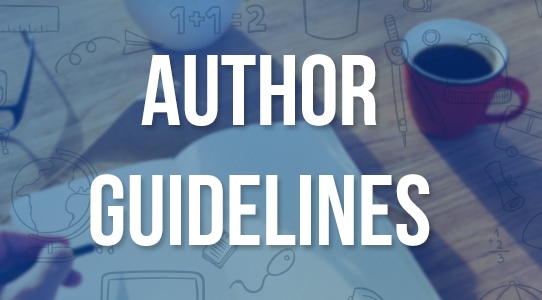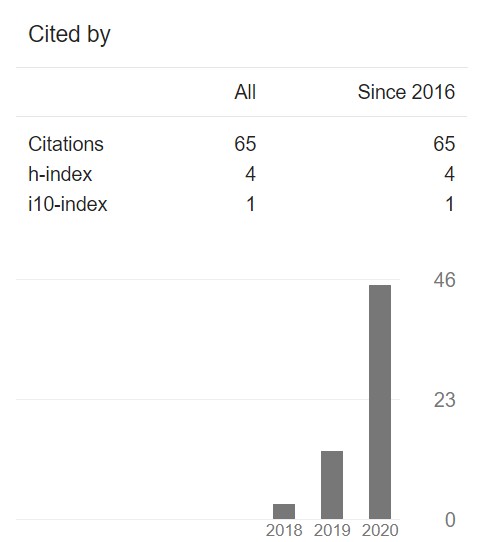A Comprehensive Analysis of Augmented Reality Applications for Geometry Education: A Systematic Literature Review and Bibliometric Analysis
DOI:
https://doi.org/10.37680/qalamuna.v16i1.4850Keywords:
systematic literature review, augmented reality, geometry, educational technologyAbstract
This research represents a significant step in exploring the potential of Augmented Reality (AR) in the context of geometry learning. By utilizing the Scopus database, this research explores AR-related trends and content in geometry learning. The literature review method was used, with a bibliometric analysis approach and systematic literature review, which included four stages: identification, screening, eligibility, and inclusion, resulting in 31 final data. This is not just a description of the data but rather an attempt to present a deeper understanding of the role and potential of AR in enhancing geometry learning. In the ever-evolving world of education, a better understanding of the role of technology such as AR can open the door to more innovative and effective learning approaches. Research shows that AR technology can improve students' understanding of geometry concepts, increase learning motivation, and improve teachers' teaching skills. With AR applications, learning geometry becomes more interactive, visual, and engaging for students at various levels of education. In addition, the use of AR technology can also help create a more in-depth learning experience and motivate students to be more active in the learning process.
Downloads
References
Ali, N. A., Sadiq, M. H., Albabawat, A. A., & Salah, R. M. (2022). Methods and Applications of Augmented Reality in Education: A Review. 2022 International Conference on Computer Science and Software Engineering (CSASE), 175–181. https://doi.org/10.1109/CSASE51777.2022.9759807
Bokyung, K. (2009). Investigating the relationships among media characteristics, presence, flow, and learning effects in augmented reality-based learning. Multimedia and E-Content Trends: Implications for Academia, 2(1), 21–37. https://doi.org/10.1007/978-3-8348-9313-0_3
Bulut, M., & Ferri, R. B. (2023). A systematic literature review on augmented reality in mathematics education. European Journal of Science and Mathematics Education, 11(3), 556–572. https://doi.org/10.30935/scimath/13124
Bursztyn, N., Shelton, B., Walker, A., & Pederson, J. (2017). Increasing Undergraduate Interest to Learn Geoscience with GPS-based Augmented Reality Field Trips on Students’ Own Smartphones. GSA Today, 4–10. https://doi.org/10.1130/GSATG304A.1
Candra Sari, R., Rika Fatimah, P. L., Ilyana, S., & Dwi Hermawan, H. (2022). Augmented reality (AR)-based sharia financial literacy system (AR-SFLS): a new approach to virtual sharia financial socialization for young learners. International Journal of Islamic and Middle Eastern Finance and Management, 15(1), 48–65. https://doi.org/10.1108/IMEFM-11-2019-0484
Çetin, H., & Türkan, A. (2022). The Effect of Augmented Reality based applications on achievement and attitude towards science course in distance education process. Education and Information Technologies, 27(2), 1397–1415. https://doi.org/10.1007/s10639-021-10625-w
Chandrakar, M., & Bhagat, K. K. (2020). Development of an Augmented Reality-Based Game for Projectile Motion. The Physics Teacher, 58(9), 668–669. https://doi.org/10.1119/10.0002739
Fernández-Batanero, J. M., Montenegro-Rueda, M., & Fernández-Cerero, J. (2022). Use of Augmented Reality for Students with Educational Needs: A Systematic Review (2016–2021) Uso de la Realidad Aumentada para estudiantes con necesidades educativas: Una revisión sistemática (2016-2021). Societies, 12(2).
Gao, C., Dong, L., Xu, L., Liu, X., & Li, H. (2023). Performance improvement for additive light field displays with weighted simultaneous algebra reconstruction technique and tracked views. Journal of the Society for Information Display, 31(4), 169–183. https://doi.org/10.1002/jsid.1194
Goksu, I. (2021). Bibliometric mapping of mobile learning. Telematics and Informatics, 56, 101491. https://doi.org/10.1016/j.tele.2020.101491
Hincapie, M., Diaz, C., Valencia, A., Contero, M., & Güemes-Castorena, D. (2021). Educational applications of augmented reality: A bibliometric study. Computers & Electrical Engineering, 93, 107289.
Jumani, A. K., Siddique, W. A., Laghari, A. A., Abro, A., & Khan, A. A. (2022). Virtual Reality and Augmented Reality for Education. Multimedia Computing Systems and Virtual Reality, February, 189–210. https://doi.org/10.1201/9781003196686-9
Kapetanaki, A., Krouska, A., Troussas, C., & Sgouropoulou, C. (2022). Exploiting Augmented Reality Technology in Special Education: A Systematic Review. Computers, 11(10). https://doi.org/10.3390/computers11100143
Karakus, M., Ersozlu, A., & Clark, A. C. (2019). Augmented Reality Research in Education: A Bibliometric Study. EURASIA Journal of Mathematics, Science and Technology Education, 15(10).
Kaviyaraj, R., & Uma, M. (2022). Augmented Reality Application in Classroom: An Immersive Taxonomy. 2022 4th International Conference on Smart Systems and Inventive Technology (ICSSIT), 1221–1226. https://doi.org/10.1109/ICSSIT53264.2022.9716325
Khadijah, U. (2023). Pemanfaatan Augmented Reality untuk Meningkatkan Keterampilan Geometri dalam Pembelajaran Matematika. Jurnal Dunia Ilmu, 3(3).
Küçük, S., Kapakin, S., & Göktaş, Y. (2016). Learning anatomy via mobile augmented reality: Effects on achievement and cognitive load. Anatomical Sciences Education, 9(5), 411–421. https://doi.org/10.1002/ase.1603
Kudsiah, M., Ahmadi, Z., & Rohini, R. (2023). Pengembangan Modul Interaktif Berbasis Augmented Reality Pada Materi Bangun Ruang Kelas V Sekolah Dasar. PEDAGOGIC: Indonesian Journal of Science Education and Technology, 2(2), 67–76.
Laine, T. (2018). Mobile Educational Augmented Reality Games: A Systematic Literature Review and Two Case Studies. Computers, 7(1), 19. https://doi.org/10.3390/computers7010019
Li, J., van der Spek, E., Hu, J., & Feijs, L. (2017). SEE ME ROAR: Self-determination enhanced engagement for math education relying on augmented reality. Extended Abstracts Publication of the Annual Symposium on Computer-Human Interaction in Play, 345–351. https://doi.org/10.1145/3130859.3131316
Manikam, R., & Maat, S. M. (2023). Sorotan Literatur Bersistematik: Trend Augmented Reality dalam Pengajaran dan Pembelajaran Matematik. Malaysian Journal of Social Sciences and Humanities (MJSSH), 8(1), e002046–e002046.
Martín-Gutiérrez, J., Mora, C. E., Añorbe-Díaz, B., & González-Marrero, A. (2017). Virtual Technologies Trends in Education. EURASIA Journal of Mathematics, Science and Technology Education, 13(2). https://doi.org/10.12973/eurasia.2017.00626a
Maulana, F. I., Atmaji, L. T., Azis, B., Hidayati, A., & Ramdania, D. R. (2021). Mapping the Educational Applications of Augmented Reality Research using A Bibliometric Analysis. 2021 7th International Conference on Electrical, Electronics and Information Engineering (ICEEIE), 1–6. https://doi.org/10.1109/ICEEIE52663.2021.9616934
Monfared, M., Shukla, V. K., Dutta, S., & Chaubey, A. (2022). Reshaping Education Through Augmented Reality and Virtual Reality. In Cyber Intelligence and Information Retrieval (pp. 619–629). Springer Singapore. https://doi.org/10.1007/978-981-16-4284-5_55
Munir, N. P., Thalhah, S. Z., Anas, A., & Nurwahida, N. (2023). Diseminasi Media Pembelajaran Geometri Terintegrasi Kearifan Lokal Berbantuan Augmented Reality. To Maega: Jurnal Pengabdian Masyarakat, 6(3), 621–630.
Nevarini, M., Agustiani, R., & Zahra, A. (2023). Application of Augmented Reality in Geometry Learning in Increasing Student Learning Motivation. Journal of Curriculum and Pedagogic Studies (JCPS), 2(1), 40–50.
Pahmi, S., Hendriyanto, A., Sahara, S., Muhaimin, L. H., Kuncoro, K. S., & Usodo, B. (2023). Assessing the Influence of Augmented Reality in Mathematics Education: A Systematic Literature Review. International Journal of Learning, Teaching and Educational Research, 22(5), 1–25. https://doi.org/10.26803/ijlter.22.5.1
Putra, S. D., Aryani, D., Syofyan, H., & Yasin, V. (2023). Aplikasi Augmented Reality Geometri Sekolah Dasar Untuk Bangun Datar dan Ruang Menggunakan Metode Marker Based Tracking. Jurnal Media Informatika Budidarma, 7(1), 250–259.
Rahman, M. A., Ling, L. S., & Yin, O. S. (2020). Augmented Reality for Learning Calculus: A Research Framework of Interactive Learning System. In Lecture Notes in Electrical Engineering (pp. 491–499).
Rifai, A., & Harsanto, K. (2023). Augmented Reality Game pada Materi Geometri Berbasis Etnomatematika Keraton Yogyakarta. JURNAL FASILKOM, 13(02), 279–285.
Sáez-López, J. M., Sevillano-García, M. L., & Pascual-Sevillano, M. Á. (2019). Application of the ubiquitous game with augmented reality in primary education. Comunicar, 27(61), 66–76.
Sari, I. P., Batubara, I. H., & Basri, M. (2023). Pengenalan Bangun Ruang Menggunakan Augmented Reality sebagai Media Pembelajaran. Hello World Jurnal Ilmu Komputer, 1(4), 209–215.
Shirazi, A., & Behzadan, A. H. (2015). Design and Assessment of a Mobile Augmented Reality-Based Information Delivery Tool for Construction and Civil Engineering Curriculum. Journal of Professional Issues in Engineering Education and Practice, 141(3).
Utami, N., Setiawan, A., & Hamidah, I. (2023). A bibliometric analysis of augmented reality in higher education. Journal of Engineering Science and Technology, 18(3), 1599–1613.
Ventes, M. D. F., Quispe Matta, A. L., Cabana Palomino, E. A., Ogosi Auqui, J. A., & Cano Chuqui, J. (2023). Study of Augmented Reality for the Development of Learning at the Primary Education Level. Lecture Notes in Networks and Systems, 579, 475–482.
Volioti, C., Keramopoulos, E., Sapounidis, T., Melisidis, K., Kazlaris, G. C., Rizikianos, G., & Kitras, C. (2022). Augmented Reality Applications for Learning Geography in Primary Education. Applied System Innovation, 5(6). https://doi.org/10.3390/asi5060111
Walker, Z., McMahon, D. D., Rosenblatt, K., & Arner, T. (2017). Beyond Pokémon: Augmented reality is a universal design for learning tool. SAGE Open, 7(4). https://doi.org/10.1177/2158244017737815
Yeh, H.-C., & Tseng, S.-S. (2020). LANGUAGE TEACHING AND TECHNOLOGY FORUM Enhancing multimodal literacy using augmented reality. Language Learning & Technology, 24(1), 27–37.
Zhao, X., Ren, Y., & Cheah, K. S. L. (2023). Leading Virtual Reality (VR) and Augmented Reality (AR) in Education: Bibliometric and Content Analysis From the Web of Science (2018–2022). SAGE Open, 13(3), 21582440231190820.
Downloads
Published
How to Cite
Issue
Section
License
Authors who submit manuscript retain its copyright and grant publisher right of first publication licensed under a Creative Commons Attribution-ShareAlike 4.0 International License (CC BY-SA 4.0) that allows others to access (search, read, download, and cite), share (copy and redistribute the material in any medium or format) and adapt (remix, transform, and build upon any material) the work for any lawful purpose, even commercially with an acknowledgement of the work's authorship and initial publication in Qalamuna: Jurnal Pendidikan, Sosial, dan Agama.













